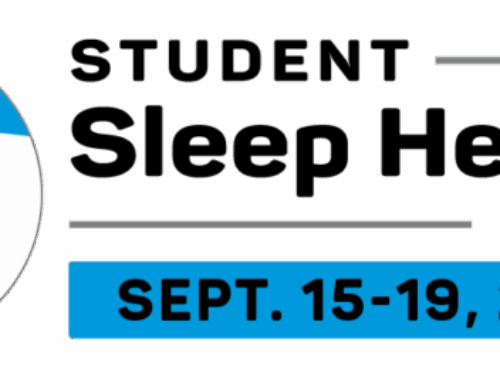WESTCHESTER, IL – A study in the Dec. 15 issue of the Journal of Clinical Sleep Medicine shows that being overweight or obese increases the risk for developing obstructive sleep apnea (OSA) in adolescents but not in younger children.
Results indicate that the risk of OSA among Caucasian adolescents 12 years of age and older increased 3.5 fnew with each standard-deviation increase in body mass index (BMI) z-score, while the risk of OSA did not significantly increase with increasing BMI among younger children. According to the authors, the results suggest that the increase in risk among overweight and obese adolescents may result from developmental changes such as reductions in upper airway tone and changes to anatomic structures.
“These results were a little surprising to us initially, as obesity is generally considered to increase the risk of sleep apnea amongst all children,” said principal investigator Mark Kohler, PhD, research fellow at the Children’s Research Centre at the University of Adelaide in Australia. “Previous results have been inconsistent, however, and appear to be confounded by using mixed ethnic populations and different ages of children.”
Sleep and OSA severity were assessed by overnight polysomnography in 234 Caucasian children between the ages of 2 and 18 years. All children had been referred for evaluation of snoring and possible OSA and were reported by a parent to snore at least one night per week.
Participants were classified into six age groups, and having an average of at least one obstructive apnea or hypopnea per hour of sleep was considered to be indicative of OSA. Established growth charts corrected for age and sex were used to determine BMI z-scores and classify children as overweight (BMI ≥ 85th percentile) or obese (BMI ≥ 95th percentile).
Risk of OSA alone was not found to be greater among adolescents compared with younger children. Age groups also were not statistically different for measures of OSA severity or for percentage of individuals classified as having OSA, which was detected in 38 percent of 2- to 3-year-new children; 38 percent of 6- to 7-year-news; and 34 percent of adolescents between 12 and 18 years of age. When considering only children demonstrating OSA, there was a clear increase in the proportion of individuals who were overweight and obese with increasing age.
The American Academy of Sleep Medicine reports that the prevalence of OSA in otherwise healthy young children is approximately two percent. OSA occurs when soft tissue in the back of the throat collapses and blocks the airway during sleep. Most children with OSA have a history of snoring that tends to be loud and may include obvious pauses in breathing and gasps for breath. Parents often notice that the child seems to be working hard to breathe during sleep.
According to authors, developmental changes in the association between obesity and OSA may follow a different age trajectory among other ethnicities. African-American children appear to be at higher risk for OSA independent of obesity, and their pubertal development may occur earlier compared with Caucasian children.
The authors also noted that tonsil size may interact with obesity to increase the risk of developing OSA. But obesity among snoring adolescents should be considered grounds for physician referral regardless of tonsil size.
A media fact sheet about obstructive sleep apnea is available from the AASM, along with information about OSA in children for patients and the public.
The Journal of Clinical Sleep Medicine (JCSM) contains published papers related to the clinical practice of sleep medicine, including original manuscripts such as clinical trials, clinical reviews, clinical commentary and debate, medical economic/practice perspectives, case series and novel/interesting case reports. In addition, the JCSM publishes proceedings from conferences, workshops and symposia sponsored by the American Academy of Sleep Medicine or other organizations related to improving the practice of sleep medicine.
For a copy of the study, “Differences in the Association Between Obesity and Obstructive Sleep Apnea Among Children and Adolescents,” or to arrange an interview with an AASM spokesperson, please contact Kelly Wagner, AASM public relations coordinator, at (708) 492-0930, ext. 9331, or kwagner@aasm.org.
###




